Previous Day - Next Day
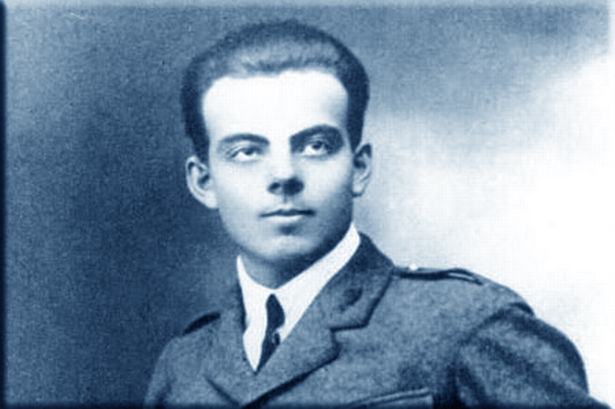
“How should men know what is coming to pass within them, when there are no words to grasp it? How could the drops of water know themselves to be a river? Yet the river flows on.”
~ Antoine De Saint-Exupery
Wikiquote (Antoine De Saint-Exupery (June 29, 1900 – July 31, 1944) was a French writer, poet and aviator.)
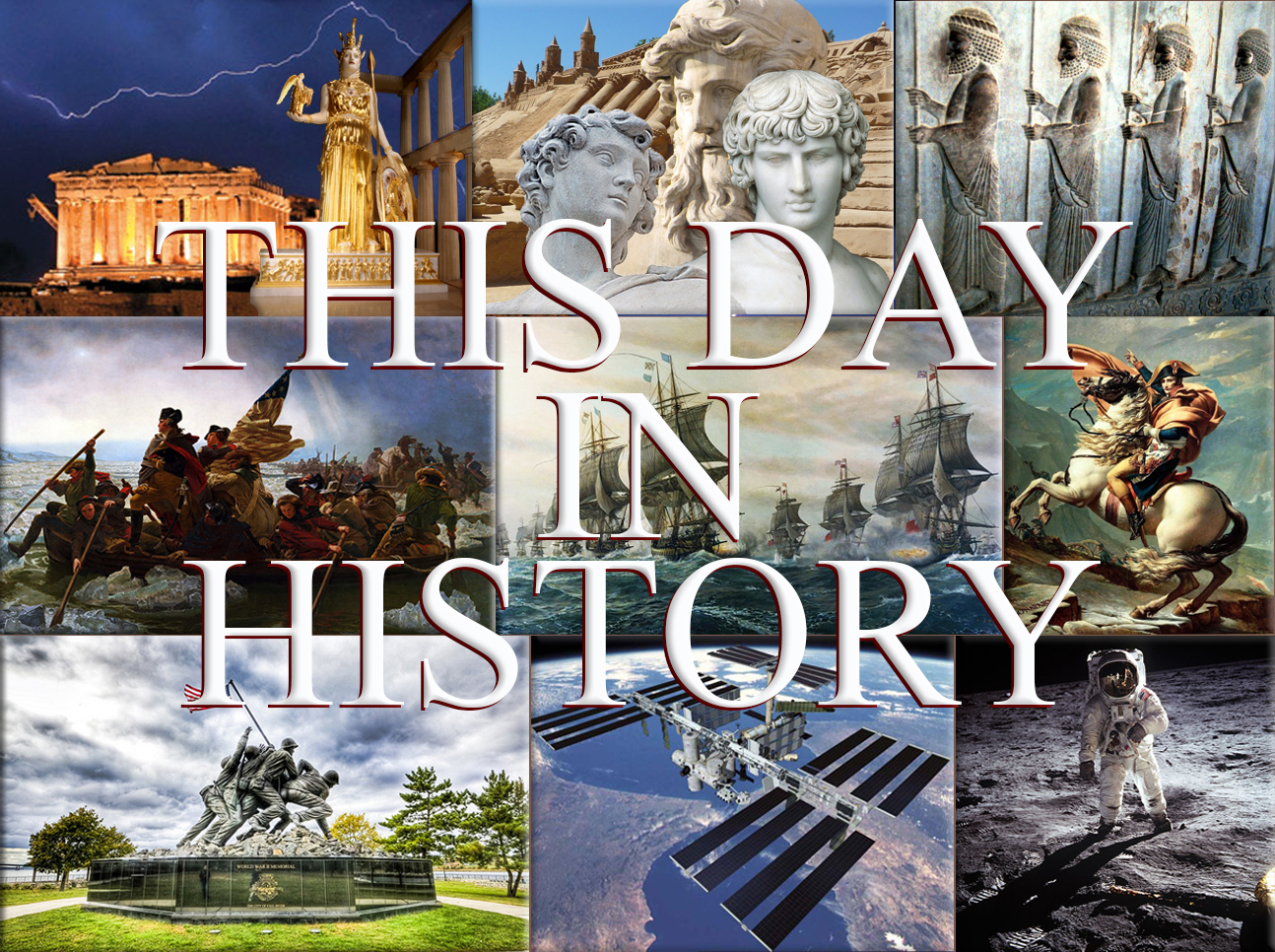
April 5th, 1081

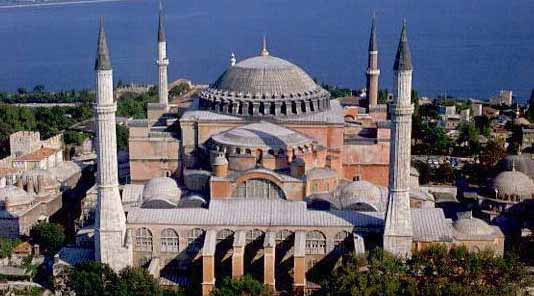
Byzantine Empire (East Roman Empire):
1081 - Alexios I Komnenos is crowned Byzantine Emperor at Constantinople, bringing the Komnenian dynasty to full power.
Wikipedia Image: The Baptism of Constantine painted by Raphael's pupils (1520–1524, fresco, Vatican City, Apostolic Palace); Mural of Saints Cyril and Methodius, 19th century, Troyan Monastery, Bulgaria; Justinian I depicted on one of the famous mosaics of the Basilica of San Vitale, Ravenna; The Greek fire was first used by the Byzantine Navy during the Byzantine-Arab Wars (from the Madrid Skylitzes, Biblioteca Nacional de España, Madrid); Alexios I, founder of the Komnenos dynasty.
Photo: Byzantine Empire is the great church of Hagia Sophia (Church of the Holy Wisdom) in Constantinople (562).
April 5th, 1242

Crusades:
1242 - Northern Crusades; Battle of the Ice of Lake Peipus, Russian forces, led by Alexander Nevsky, rebuff an invasion attempt by the Teutonic Knights.
Wikipedia Image: The Siege of Antioch, from a 15th-century miniature; After the successful siege of Jerusalem in 1099, Godfrey of Bouillon, leader of the First Crusade, became the first ruler of the Kingdom of Jerusalem; Baldwin I of Jerusalem; Medieval image of Peter the Hermit, leading knights, soldiers and women toward Jerusalem during the First Crusade; The Battle of Ager Sanguinis, 1337 miniature; Pope Innocent III excommunicating the Albigensians, Massacre against the Albigensians by the crusaders; The capture of Jerusalem marked the First Crusade's success.
April 5th, 1566
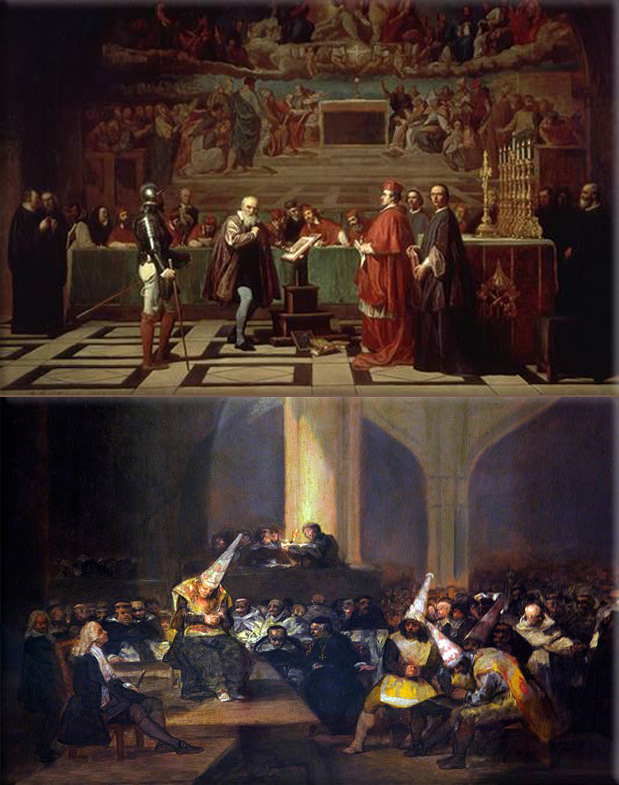
Two-hundred Dutch noblemen, led by Hendrik van Brederode, force themselves into the presence of Margaret of Parma and present the Petition of Compromise, denouncing the Spanish Inquisition in the Netherlands. The Inquisition is suspended and a delegation is sent to Spain to petition Philip II.
Wikipedia Painting: A 19th-century depiction of Galileo before the Holy Office, by Joseph-Nicolas Robert-Fleury; The Tribunal of the Inquisition, by Francisco de Goya.
April 5th, 1614
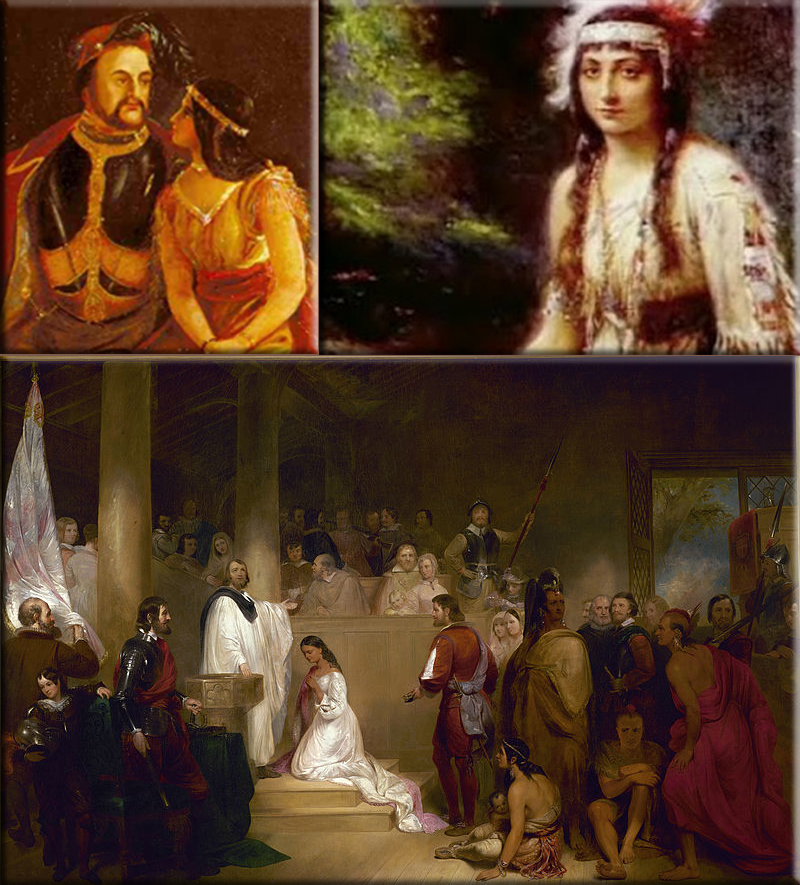
In Virginia Native American, Pocahontas marries English colonist John Rolfe.
Wikipedia Painting: John Rolfe and Pocahontas, 1850s ● Pocahontas ● Rolfe (right, standing behind Pocahontas) as portrayed in The Baptism of Pocahontas, 1840, by John Gadsby Chapman.
April 5th, 1621

Plymouth Colony:
1621 - The Mayflower sets sail from Plymouth, Massachusetts on a return trip to England.
Wikipedia Painting: "Mayflower", The Granger Collection, New York 1905; Pilgrims landing on Cape Cod in November of 1620; The Pilgrims on the Speedwell; Mayflower arrived inside the tip of Cape Cod fishhook, November 1620 (satellite image, 1997); Landing of the Pilgrims by Michele Felice Cornè, circa 1805. Displayed in the White House.
April 5th, 1722
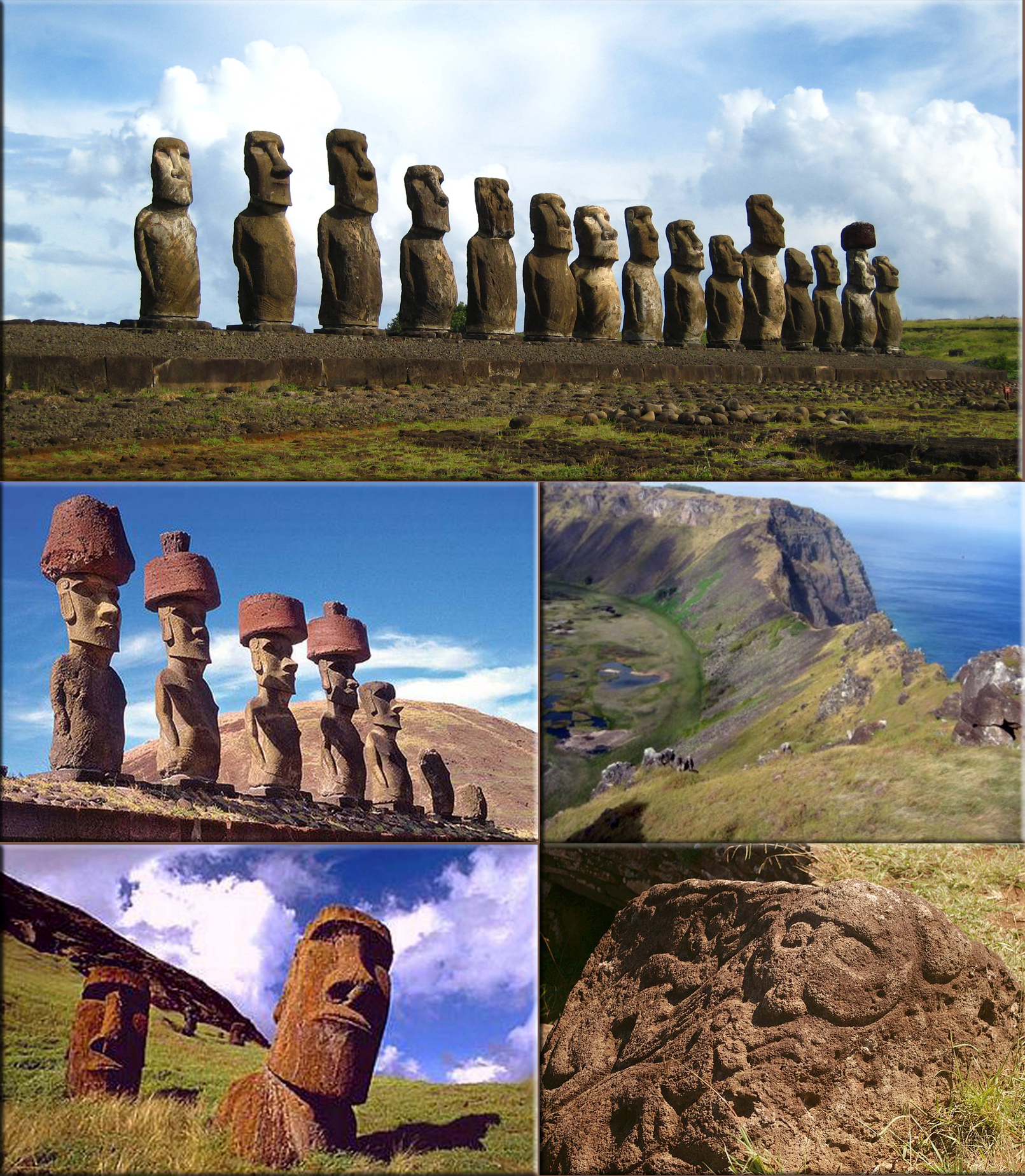
Dutch explorer Jacob Roggeveen discovers Easter Island.
Wikipedia Photo: Easter Island; Ahu Tongariki near Rano Raraku.
April 5th, 1792
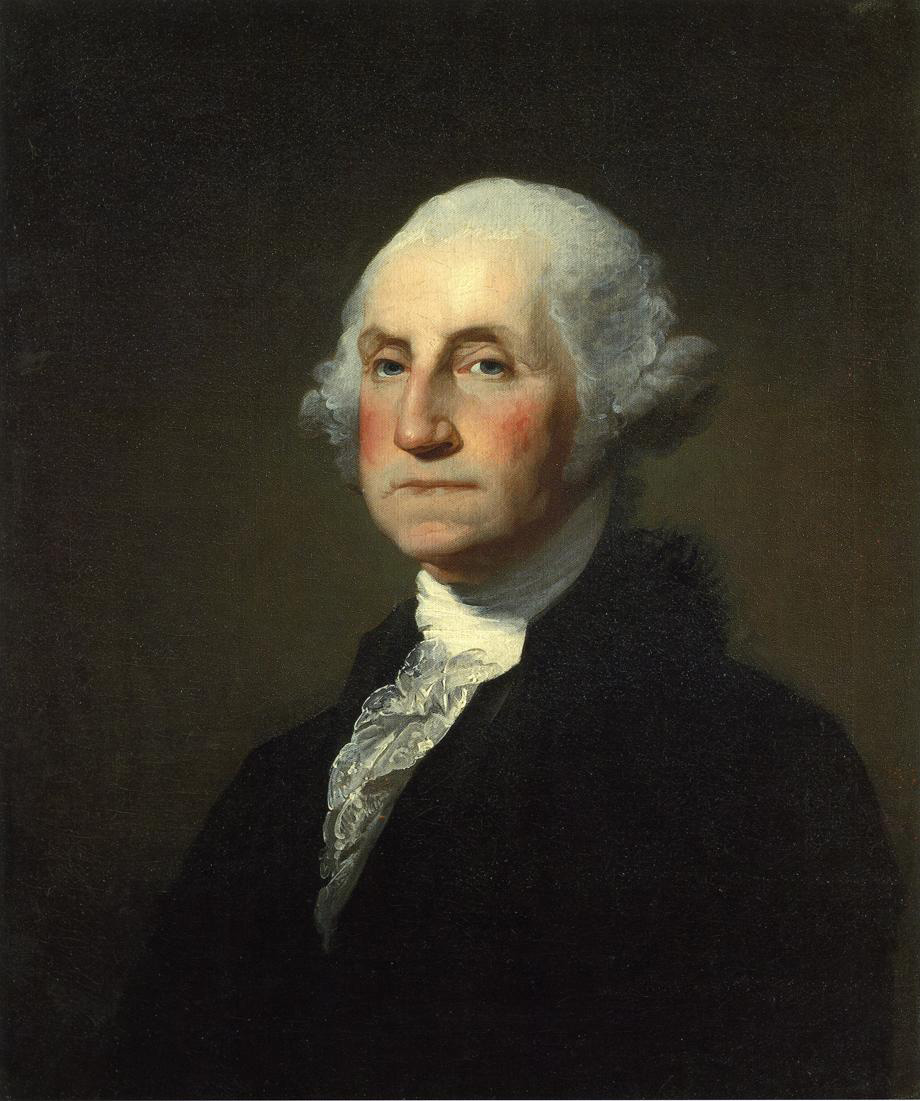
President George Washington exercises his authority to veto a bill, the first time this power is used in the United States.
Wikipedia Painting: George Washington, 1st President of the United States, Gilbert Stuart Williamstown Portrait.
April 5th, 1818

1818 - Battle of Maipú; Chile's independence movement - led by Bernardo O'Higgins and José de San Martín, win a decisive victory over Spain.
Wikipedia Photo: The very nature of Chile's topography made it one of the toughest parts of South America for the Spanish to conquer (Torres del Paine National Park (Spanish: Parque Nacional Torres del Paine) is a national park encompassing mountains, a glacier, a lake, and river-rich areas in southern Chilean Patagonia); Lautaro; The Mapuche were the original inhabitants of central and southern Chile; Chilean and Argentinean troops going to the Battle of Chacabuco (February 12, 1817) led by José de San Martín.
April 5th, 1862
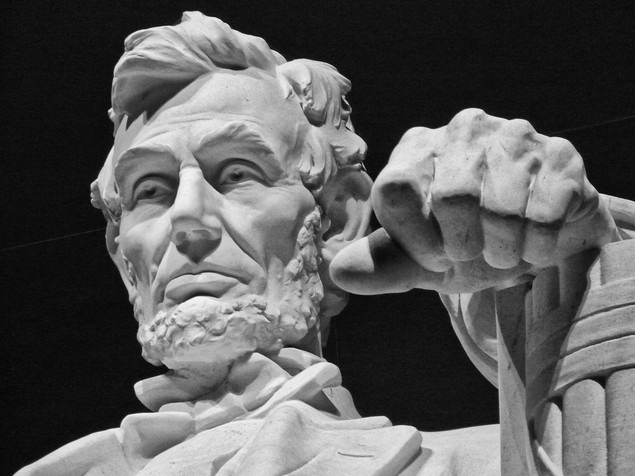
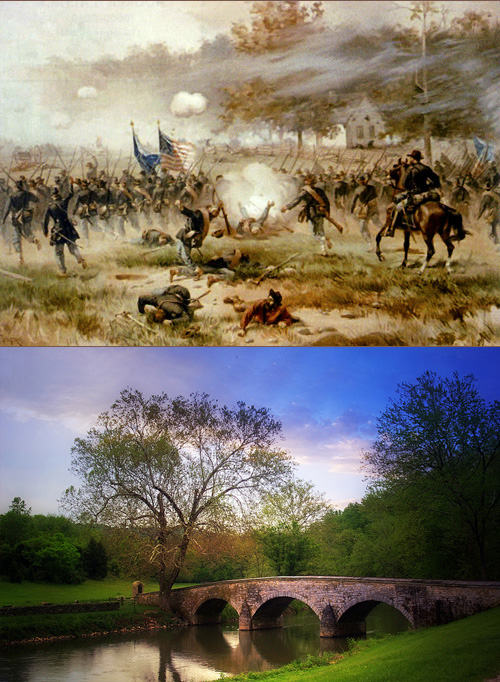
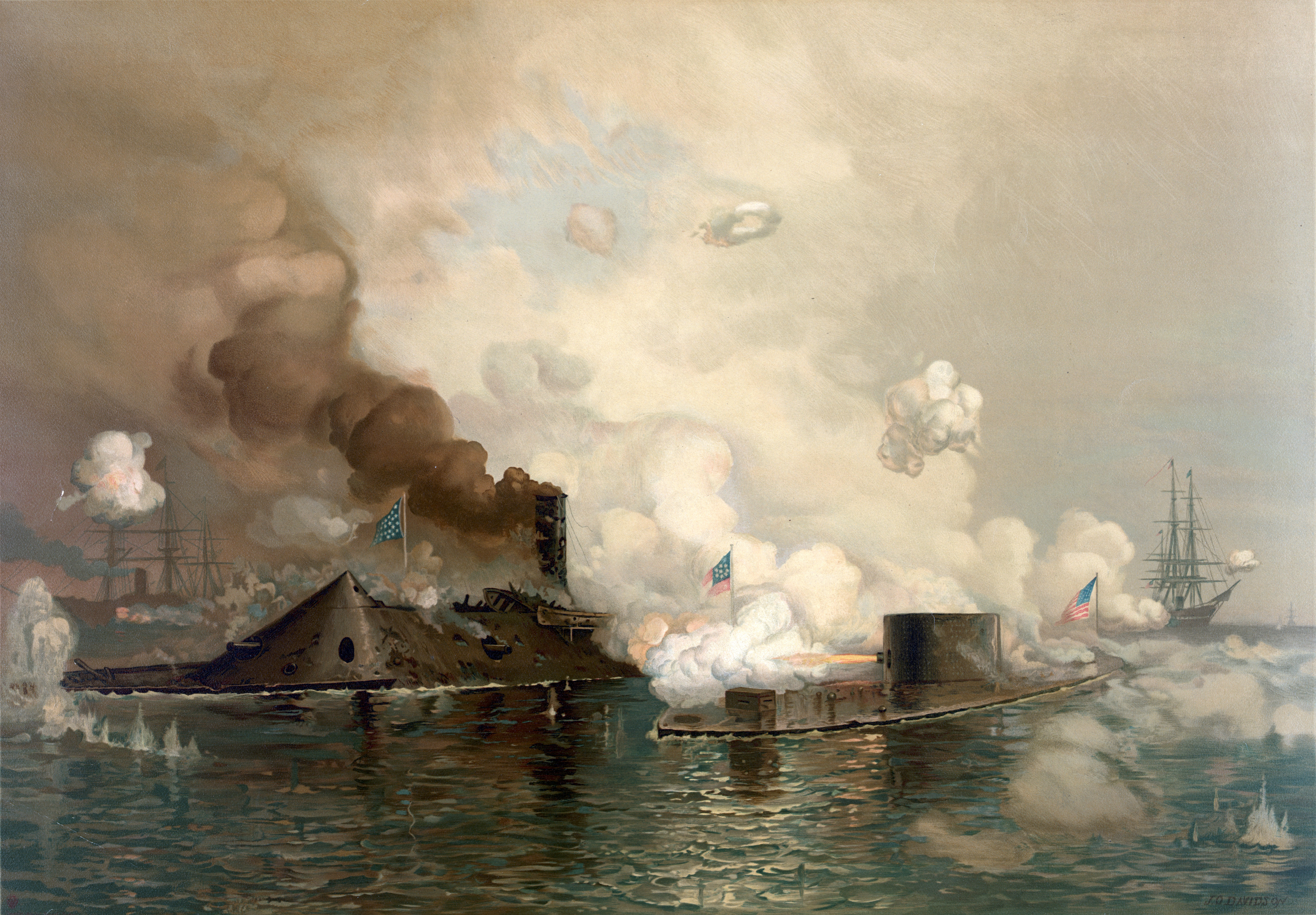
American Civil War:
1862 - The Battle of Yorktown begins.
Wikipedia Image: ● Lincoln Memorial; an American national monument built to honor the 16th President of the United States, Abraham Lincoln - located on the National Mall in Washington, D.C. across from the Washington Monument.
● The northern army led by George McClellan and the southern army led by Robert E. Lee met at Antietam Creek, Maryland in September, 1862. It was a bloody battle where 13,000 Confederates and 12,000 Union troops died in just one day. McClellan had hesitated to attack before the battle thus letting the southern troops regroup. Also, he had saved reserves and refused to use them at the end of the battle thinking that Lee was holding reserves for a counterattack, even though those reserves didn't exist. The Union victory stopped Lee's northward advance and was a turning point in the war.
● Battle of Antietam / Stone Bridge at Antietam Battlefield - Sharpsburg, Maryland
● First Battle Between Ironclads: CSS Virginia/Merrimac (left) vs. USS Monitor, in 1862 at the Battle of Hampton Roads.
● Although photography was still in its infancy, war correspondents produced thousands of images, bringing the harsh realities of the frontlines to those on the home front in a new and visceral way. The Atlantic.
April 5th, 1879

War of the Pacific:
1879 - Chile declares war on Bolivia and Peru starting the War of the Pacific.
Wikipedia Painting: War of the Pacific: (1879 - 1883) Chile fought against Bolivia and Peru.
April 5th, 1900
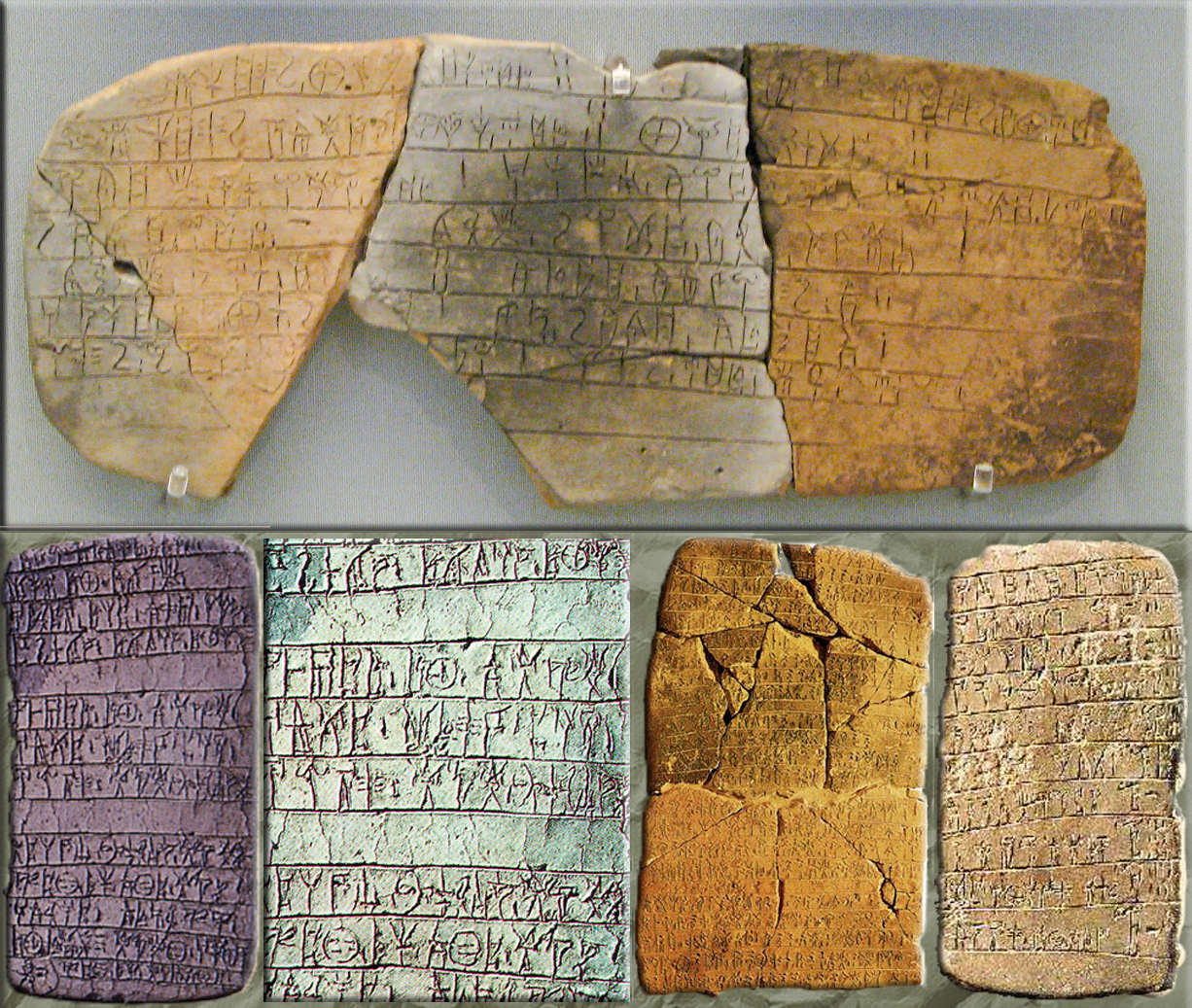
Archaeologists in Knossos Crete, discover a large cache of clay tablets with hieroglyphic writing in a script they call Linear B.
Wikipedia Photo: NAMA Linear B tablet of Pylos, credit Proteus.Brown.edu, UMmass.edu, Oocities.org.
April 5th, 1922
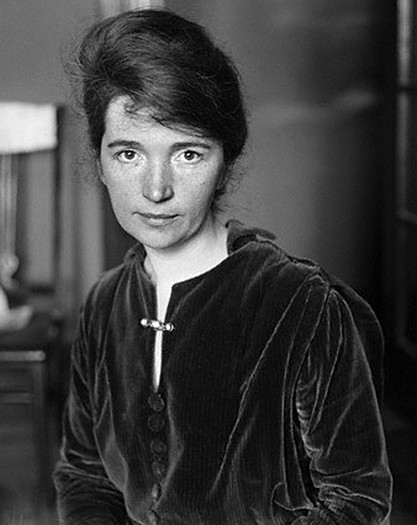
American Birth Control League, forerunner of Planned Parenthood is incorporated.
Wikipedia Margaret Sanger (1879-1966) was an early and ardent supporter of birth control, founding the American Birth Control League in 1921.
April 5th, 1923
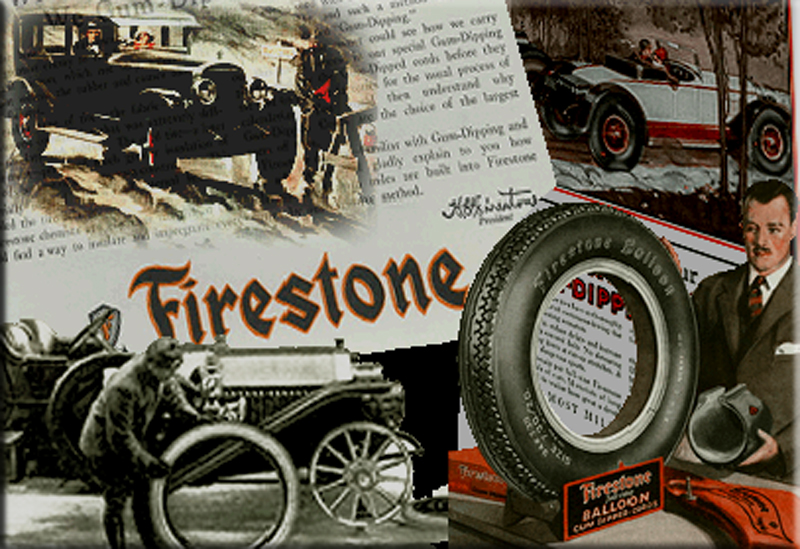
Firestone Tire and Rubber Company begins production of balloon-tires.
Wikipedia Early Firestone Advertisement.
April 5th, 1930

Mohandas Gandhi ends a 241 mile march to Dandi in the Salt Satyagraha.
Wikipedia Photo: Mohandas Gandhi, Gandhi (1906), Mohandas K. Gandhi arrived in South Africa as a young British-trained lawyer (1893) - The New York Times; Gandhi in South Africa (1895); Mahatma Gandhi spinning yarn, (1920); Mohandas Karamchand Gandhi.
April 5th, 1932

Alcohol prohibition in Finland ends. Alcohol sales begin in Alko liquor stores.
Wikipedia Photo: Volstead Act paves the way for Prohibition the following January, and ends on December 5th 1933 with the retification of the Twenty-first Amendment to the United States Constitution.
April 5th, 1933
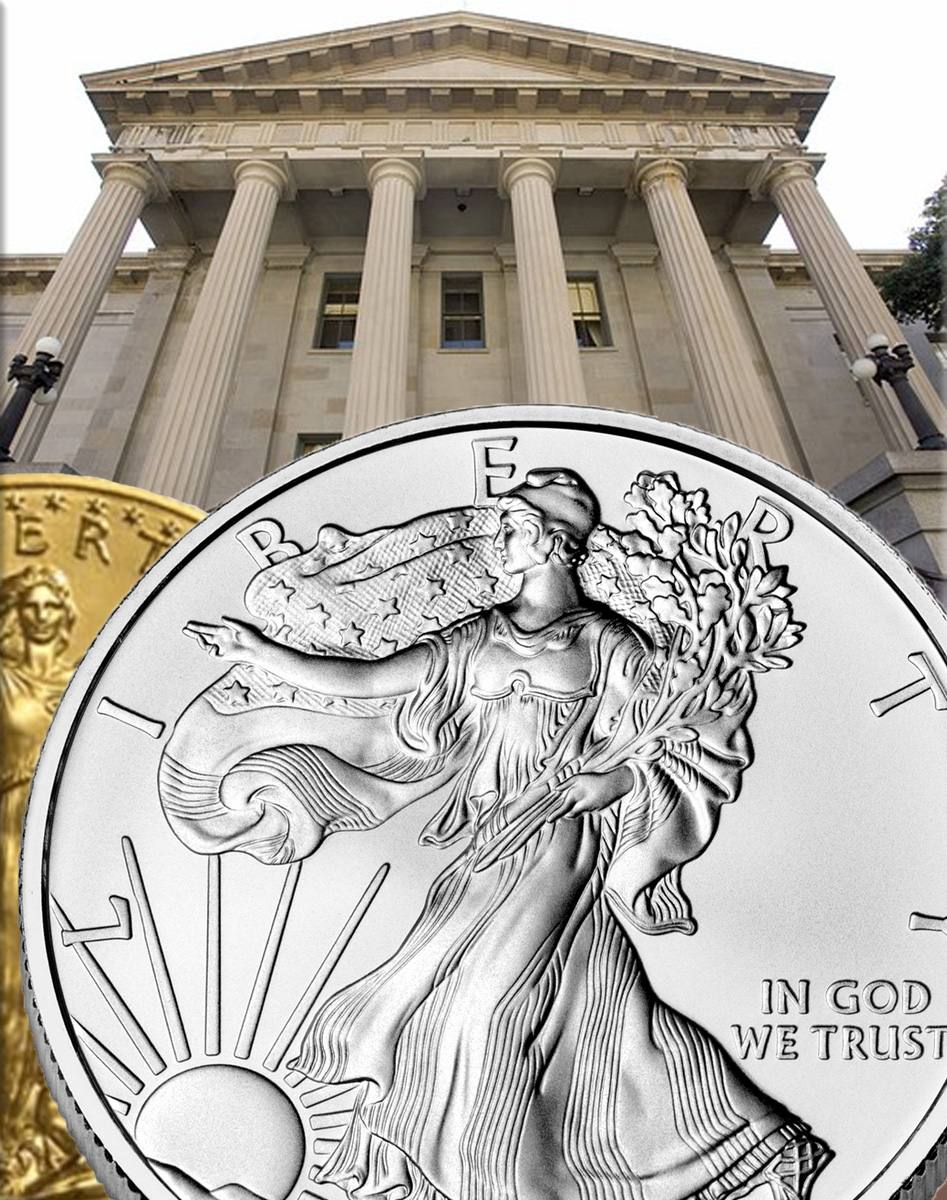
United States President Franklin D. Roosevelt signs two executive orders:
● 6101 to establish the Civilian Conservation Corps, and
● 6102 "forbidding the Hoarding of Gold Coin, Gold Bullion, and Gold Certificates" by U.S. citizens.
Wikipedia Photo: Executive order "forbidding the Hoarding of Gold coin, Gold Bullion, and Gold Certificates" by U.S. citizens
April 5th, 1936
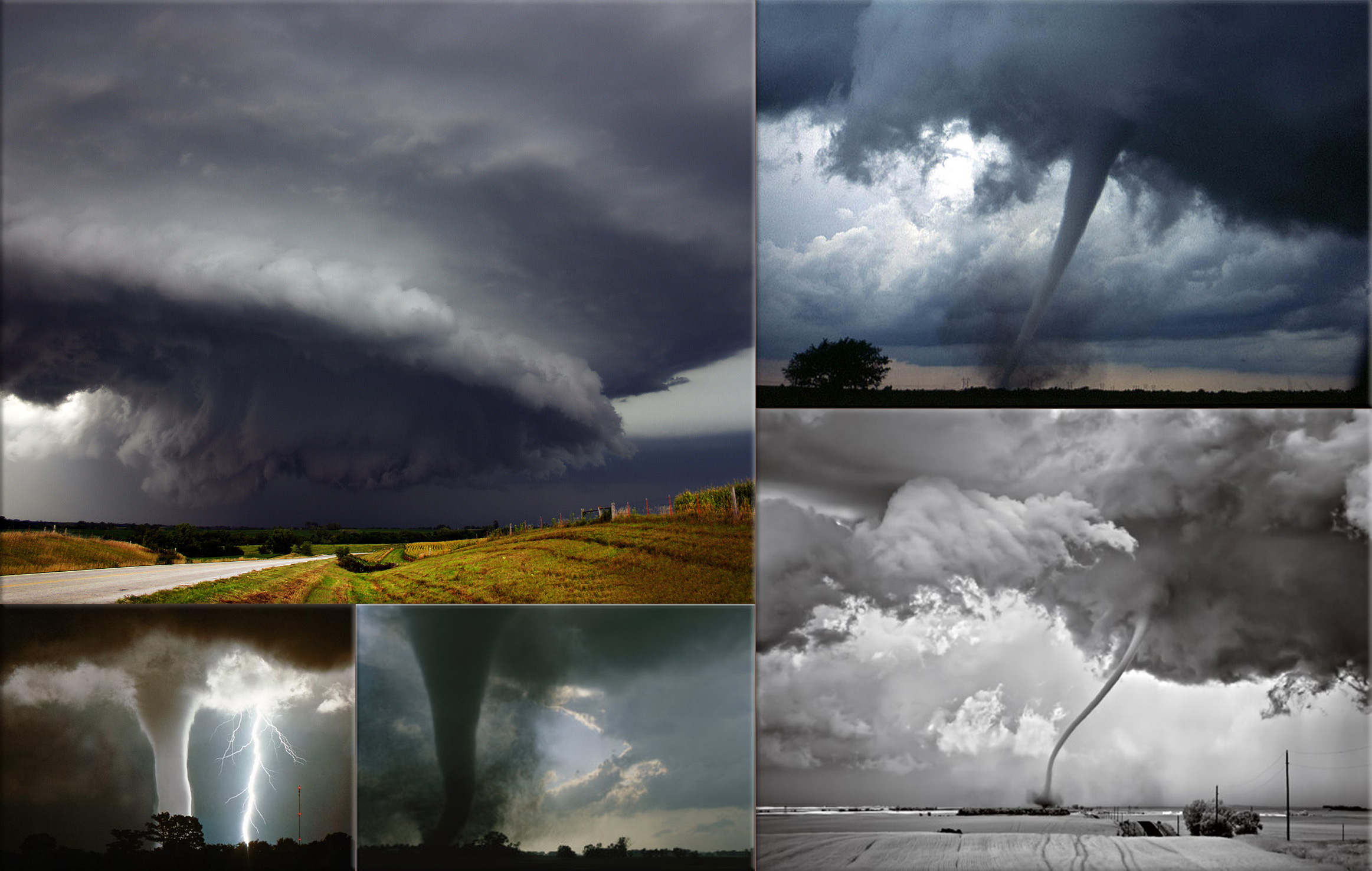
Tornadoes:
1936 - Tupelo-Gainesville tornado outbreak; A F5 tornado kills 233 in Tupelo, Mississippi.
Wikipedia Photo: Weather Front System; Tornado near Anadarko, Oklahoma; North Dakota Tornado; F3 Category Tornado Swirls Across A South Dakota Prairie by Carsten Peter; A waterspout parallels a lightning strike over Lake Okeechobee in Florida, by Fred K. Smith, National Geographics, Extream Instability.
April 5th, 1942
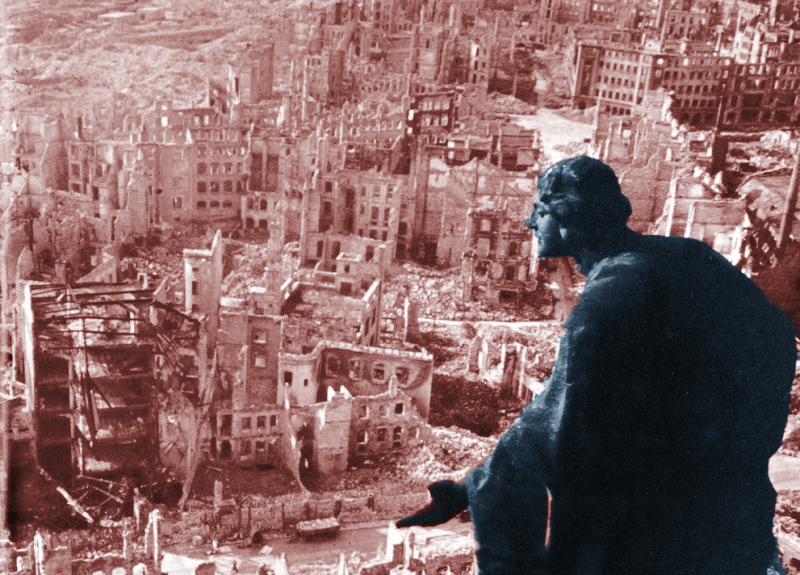

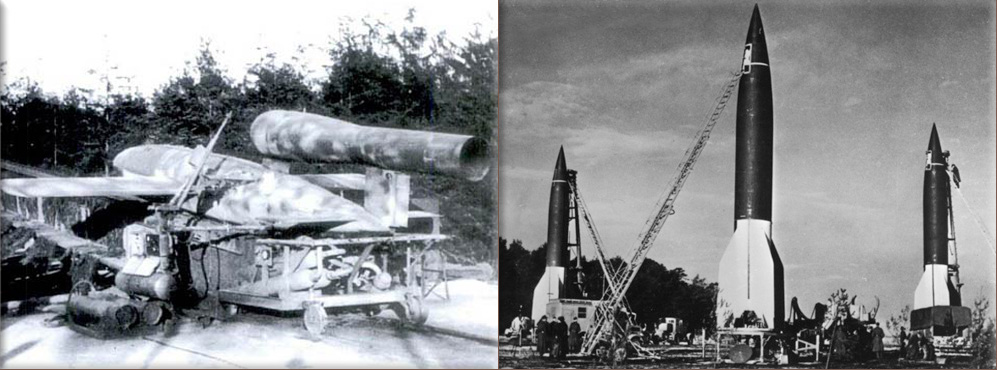
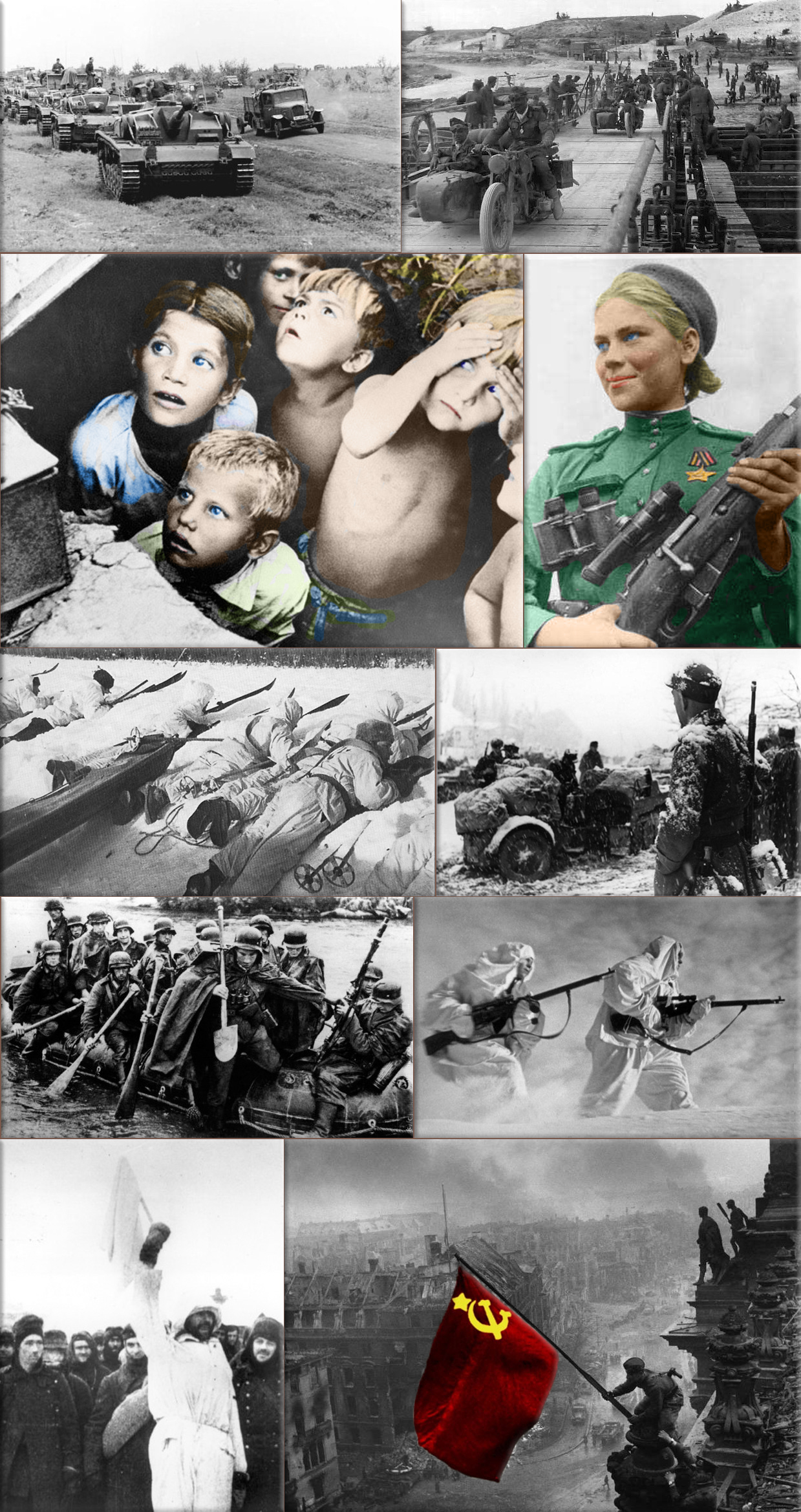
World War II:
1942 - Easter Sunday Raid; Indian Ocean Raid - The Imperial Japanese Navy launches a carrier-based air attack on Colombo Ceylon.
1943 - American bomber aircraft accidentally cause more than 900 civilian deaths, including 209 children, and 1300 wounded among the civilian population of the Belgian town of Mortsel. (The target is the Erla factory one kilometer from the residential area hit.)
Post World War II:
1946 - Soviet troops leave the island of Bornholm, Denmark after an 11 month occupation.
Wikipedia Photo: Bombing of Dresden in World War II; August Schreitmüller's sculpture 'Goodness' surveys Dresden after a firestorm started by Allied bombers in 1945.
USS Bunker Hill was hit by kamikazes piloted by Ensign Kiyoshi Ogawa and another airman on 11 May 1945. 389 personnel were killed or missing from a crew of 2,600; Ensign Kiyoshi Ogawa, who flew his aircraft into the USS Bunker Hill during a Kamikaze mission on 11 May 1945; Kamikaze Missions - Lt Yoshinori Yamaguchi's Yokosuka D4Y3 (Type 33 Suisei) "Judy" in a suicide dive against USS Essex. The dive brakes are extended and the non-self-sealing port wing tank is trailing fuel vapor and/or smoke 25 November 1944.
German V1 flying-bomb and V2 Rockets - Preparations for a Salvo Launch of V-2 Rockets in the Heidelager near Blizna (Poland) (1944), credit German History in Documents and Images GHDI.
Eastern Front (World War II); Germans race towards Stalingrad. August 1942; Soviet children during a German air raid in the first days of the war, June 1941, by RIA Novosti archive; Soviet sniper Roza Shanina in 1944. About 400,000 Soviet women served in front-line duty units Caucasus Mountains, winter 1942/43; Finnish ski patrol: the invisible enemy of the Soviet Army with an unlimited supply of skis; Men of the German Engineers Corps cross a river which is swollen after the first autumn rains, to strengthen bridges linking the German positions on the central front in Russia. by Keystone / Getty Images. October 1942; Russian snipers fighting on the Leningrad front during a blizzard. Photo by Hulton Archive / Getty Images, 1943; German soldiers surrendering to the Russians in Stalingrad, the soldier holding the white flag of surrender is dressed in white so that there could be no doubt of his intentions, a Russian soldier is on the right of the photograph. by Keystone / Getty Images, January 1943.
April 5th, 1944
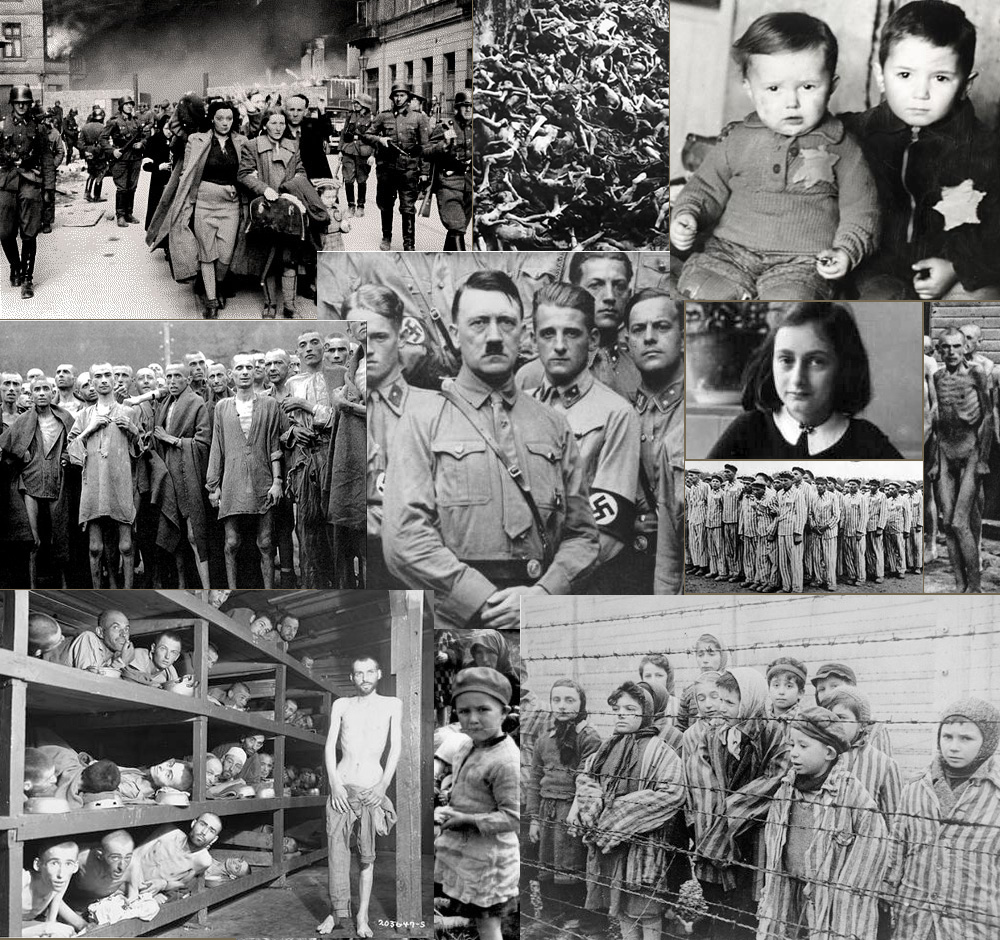
World War II: Holocaust;
1944 - 270 inhabitants of the Greek town of Kleisoura are executed by the Germans.
Wikipedia Photo: World War II, The Holocaust. Sources: United States Holocaust Memorial Museum USHMM, History 1900s, Internet Masters of Education Technology IMET, Techno Friends, Veterans Today, Concern.
April 5th, 1945
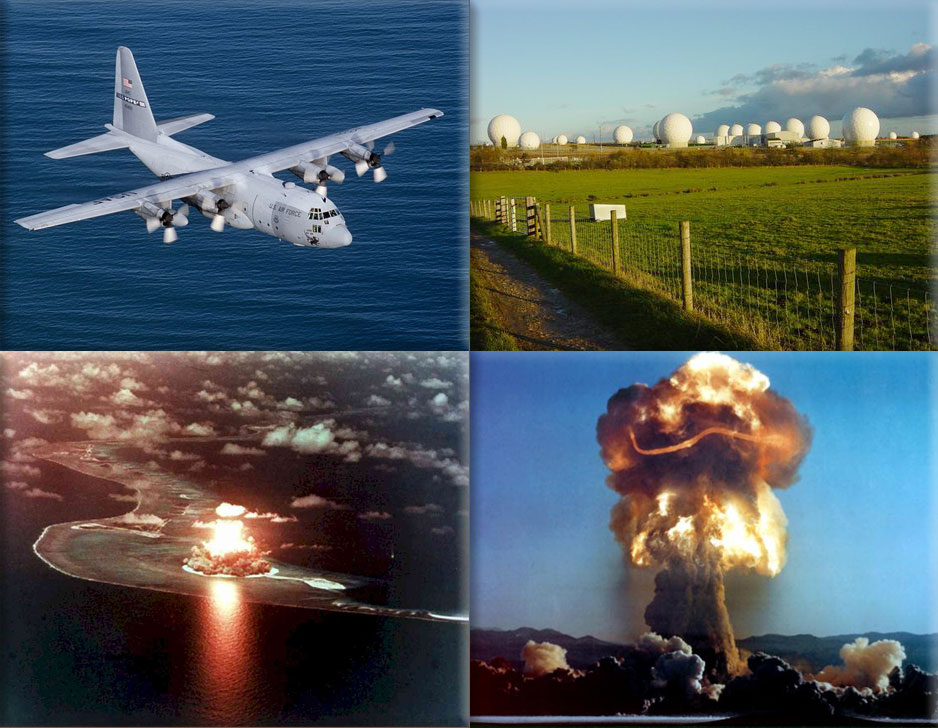
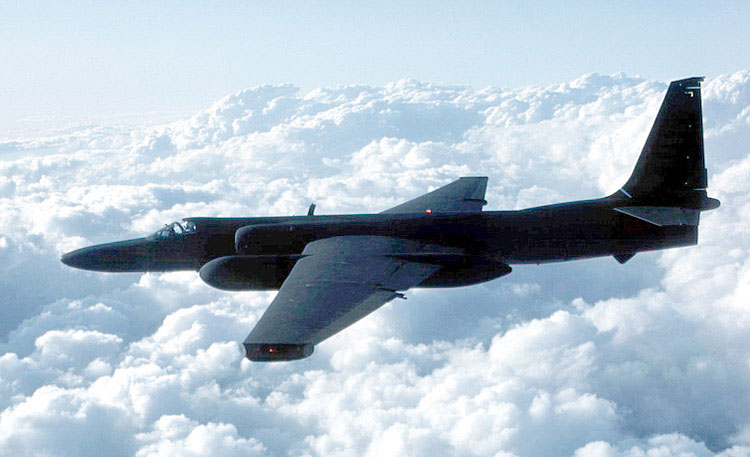

Cold War:
1945 - Yugoslav leader Josip "Tito" Broz signs an agreement with the Soviet Union to allow "temporary entry of Soviet troops into Yugoslav territory".
Wikipedia Photo: Lockheed C-130 Hercules; RAF Menwith Hill, a large site in the United Kingdom, part of ECHELON and the UKUSA Agreement; New Zealand nuclear test, British nuclear tests near the Malden and Christmas Islands in the mid-Pacific in 1957 and 1958; Nevada nuclear tests, Nevada Division of Environmental Protection Bureau of Federal Facilities.
U2, Lockheed TR-1 in flight.
April 5th, 1951
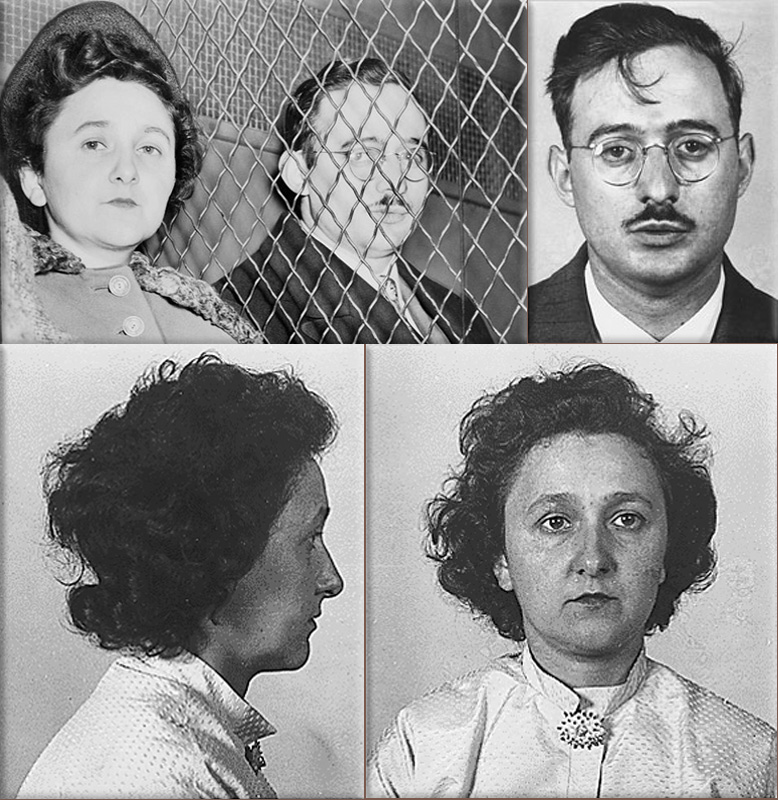
Julius and Ethel Rosenberg are sentenced to death for performing espionage for the Soviet Union.
Wikipedia Picture: Julius and Ethel Rosenberg Ethel Greenglass Rosenberg (September 25, 1915 – June 19, 1953) and Julius Rosenberg (May 12, 1918 – June 19, 1953) were American communists who were convicted and executed on June 19, 1953, for conspiracy to commit espionage during a time of war. (Their charges were related to the passing of information about the atomic bomb to the Soviet Union.)
April 5th, 1955
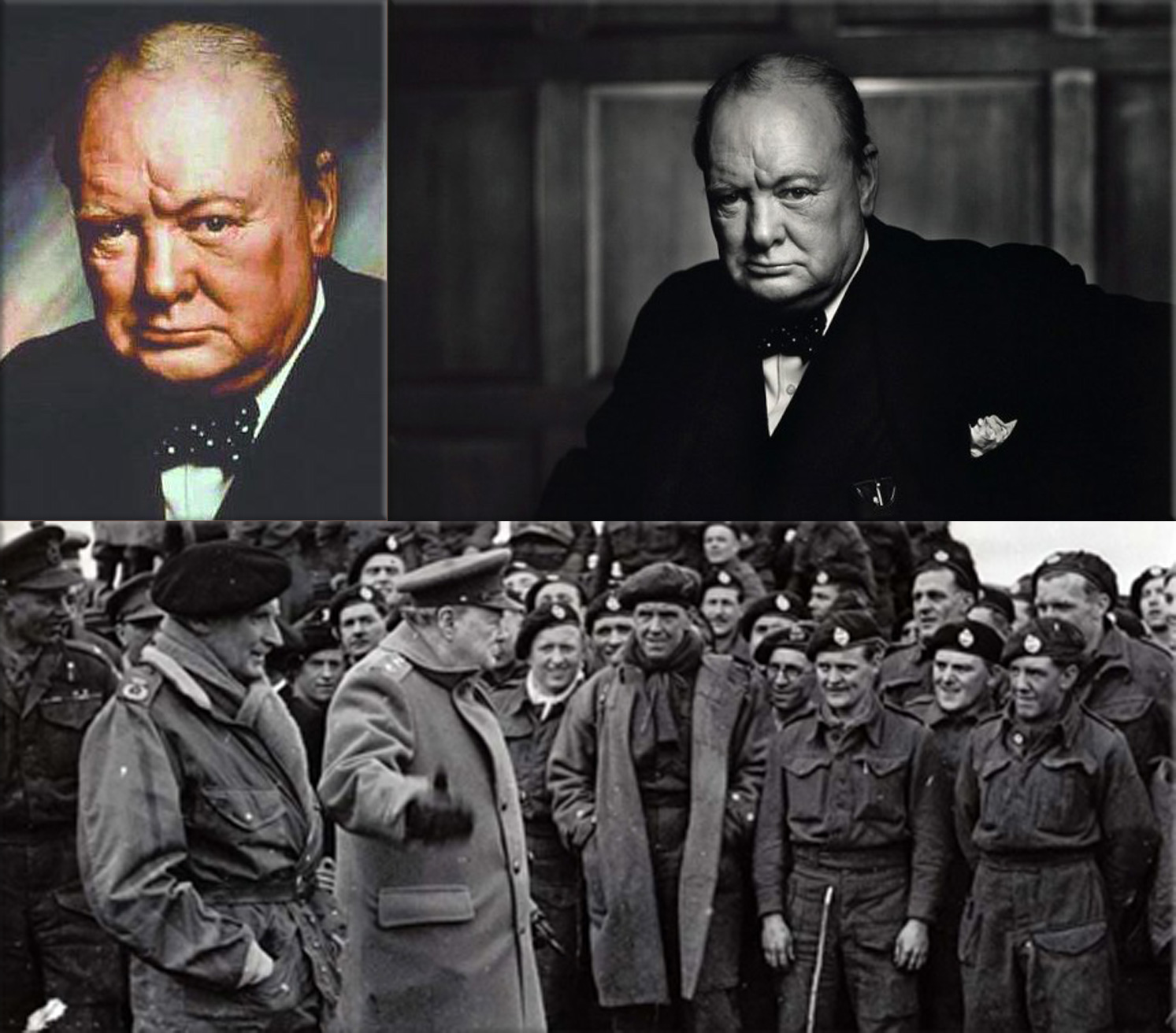
Winston Churchill resigns as Prime Minister of the United Kingdom amid indications of failing health.
Wikipedia Photo: British Prime Minister Winston Churchill ● WW2 photograph Winston Churchill congratulating the troops. ● Never was so much owed by so many to so few - Winston Churchill Speeches, Youtube 
April 5th, 1956
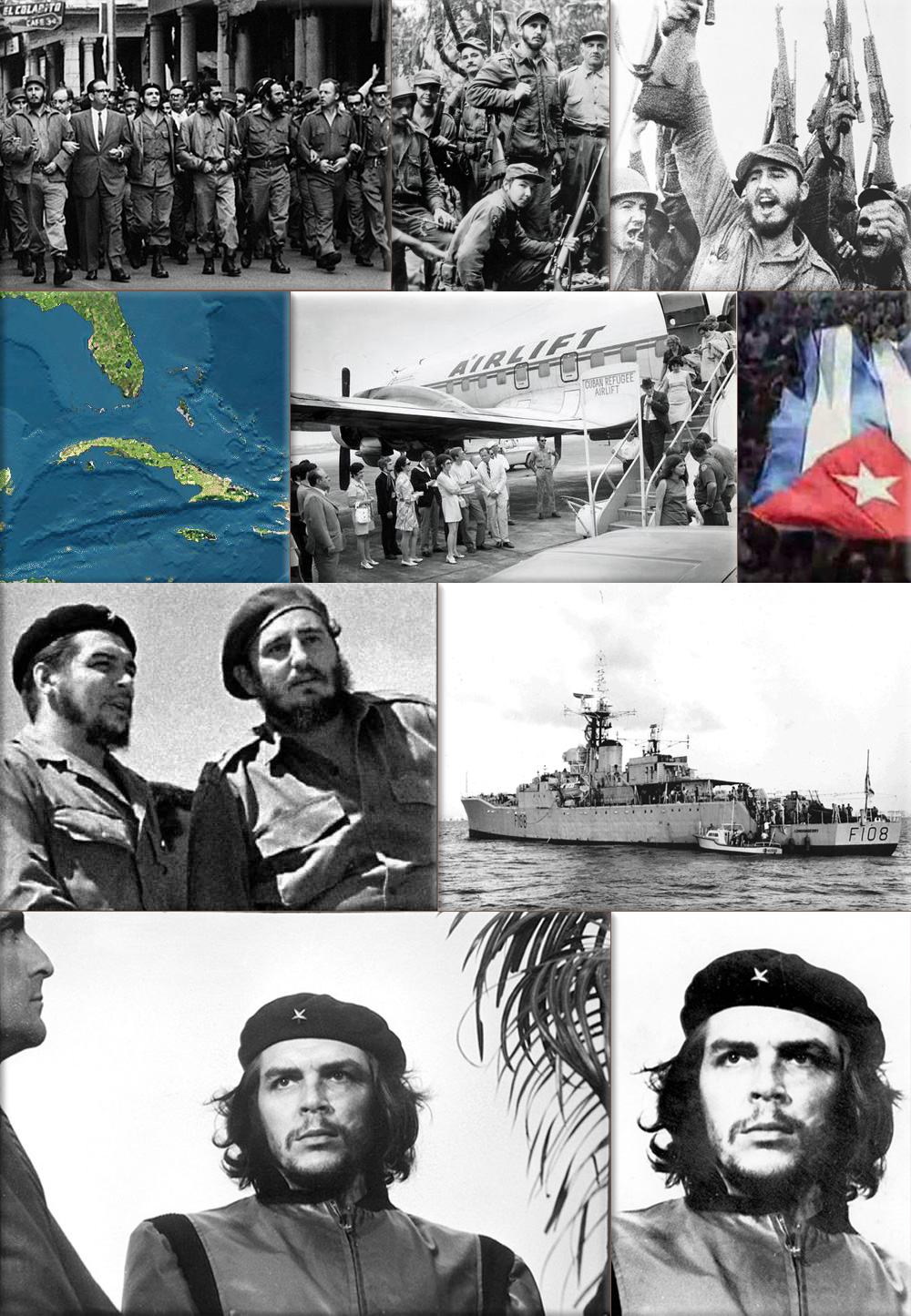
Cuban Revolution:
1956 - Fidel Castro declares himself at war with the President of Cuba.
Wikipedia Photo / Map: The leadership of the Cuban revolution; Fidel Castro played the leading role in the Cuban revolution against Fulgencio Batista (1957) AFP; Fidel Castro leads men in a cheer, Cuba, 1957, Bettmann/ Corbis; Cuban Airlift to the United States (1959 and 1962); Resiste Cuba, homenaje a la revolución cubana y sus héroes música: Protesta-Por Cuba; Che Guevara and Fidel Castro ; Official caption: "Off loading Cuban refugees at the Miami sea buoy", photo dated 4 May 1964; Photo No. 7CGD-050464 #12; Guerrillero Heroico - Alberto Korda's famous photograph of Che Guevara; The popularized cropped version.
April 5th, 1969


Vietnam War:
1969 - Massive antiwar demonstrations occur in many United States cities.
Wikipedia Photo: Vietnam_War; Side view of an HH-53 helicopter of the 40th Aerospace Rescue and Recovery Squadron as seen from the gunner's position on an A-1 of the 21st Specialist Operations Squadron. (USAF Photo by Ken Hackman), Boston Globe;
Boeing B-52 Stratofortress, credit Free Republic;
Vietnam War: The Big Picture / Boston Globe.
April 5th, 1976

In the People's Republic of China, the April Fifth Movement leads to the Tiananmen incident.
Wikipedia Photo: Tiananmen incident April 5th, 1976 (The incident occurred on the traditional day of mourning, and removal of the displays of mourning - The Gang of Four, ordered the Square to be cleared) ● Tiananmen Square protests of 1989; The “Unknown Rebel”, taken by Jeff Widener, 1989 ● A month before the crackdown, momentum was already gathering as thousands of students swarmed in the square on May 4, 1989 to call for greater freedom of speech and democracy, credit Peter Turley, Corbis.
April 5th, 1998
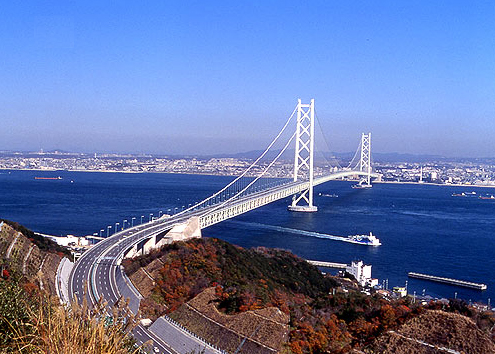
In Japan. the Akashi-Kaikyo Bridge linking Awaji Island with Honshū - costing about $3.8 billion USD, opens to traffic, becoming the largest suspension bridge in the world.
Wikipedia Photo Akashi-Kaikyo Bridge also known as “Pearl Bridge”.
April 5th, 1999
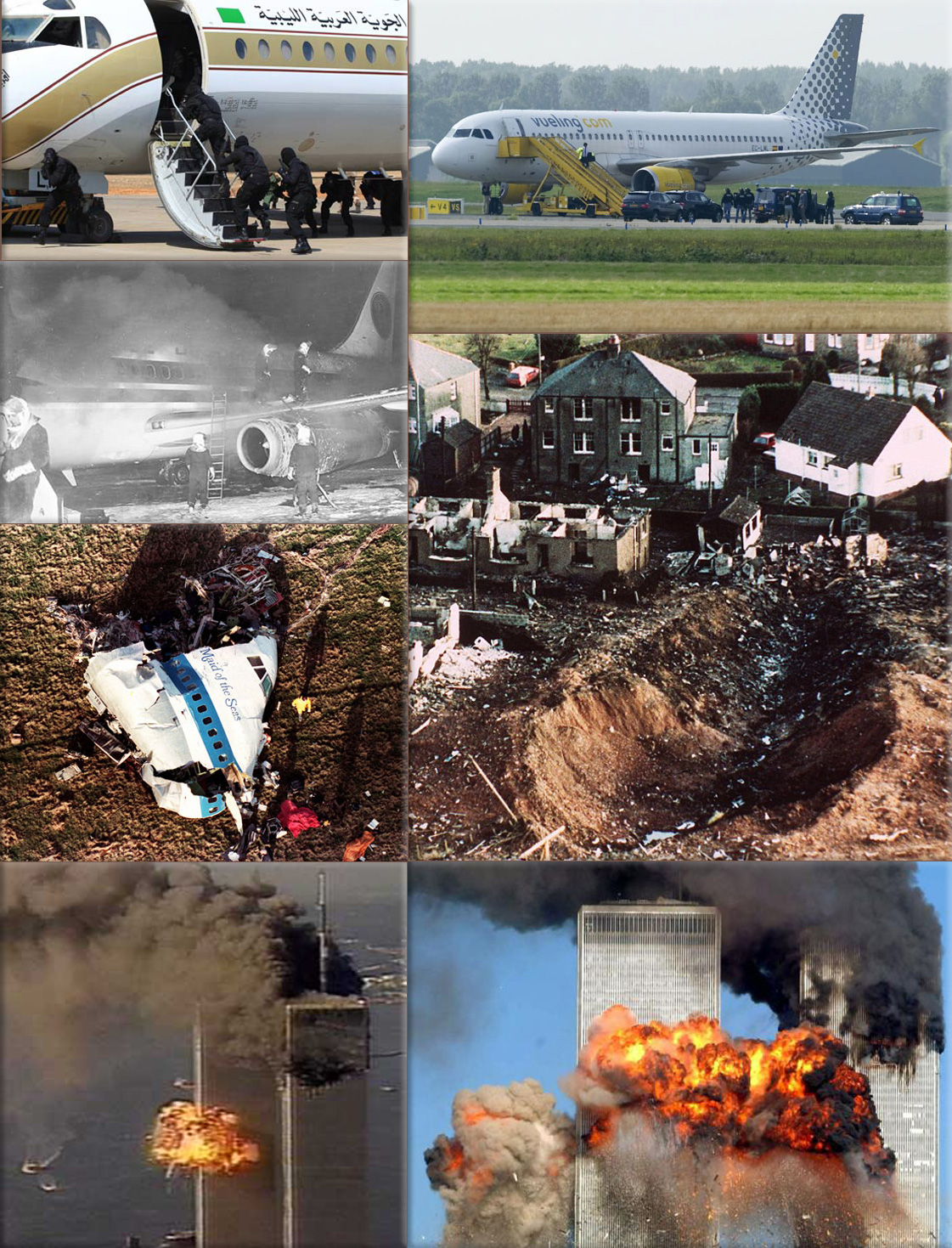
Aircraft hijacking:
1999 - Two Libyans suspected of bringing down Pan Am flight 103 in 1988 are handed over for eventual trial in the Netherlands.
Wikipedia Photo: Hijacked Sudan passenger jet lands in Libya, August 27, 2008; Amsterdam false alarm revives airplane hijacking memories, Passengers leave a Vueling plane at a field near Amsterdam Airport after a hijack scare last week that led the Netherlands to scramble F-16 fighter jets, September 2, 2012 Reuters; Egypt Air flight 648 was hijacked in November 1985 by the terrorist Abu Nidal organisation, credit AP; Cockpit section of Pan Am 103 wreckage following a mid-air explosion, December 21, 1988; 747 Pan Am airliner that exploded and crashed over Lockerbie, Scotland, with 259 passengers on board in 1988; Debris lies in a deep gash through the town of Lockerbie, Scotland, caused by the crash of Pan Am flight 103, credit AP; Flight 175 hits the WTC South Tower. The picture was taken from a traffic helicopter. credit: WABC 7/ Salient Stills; Hijacked United Airlines Flight 175 from Boston crashes into the South Tower of the World Trade Center and explodes at 9:03 a.m. on September 11, 2001 in New York City, credit Spencer Platt / Getty Images.
April 5th, 2009
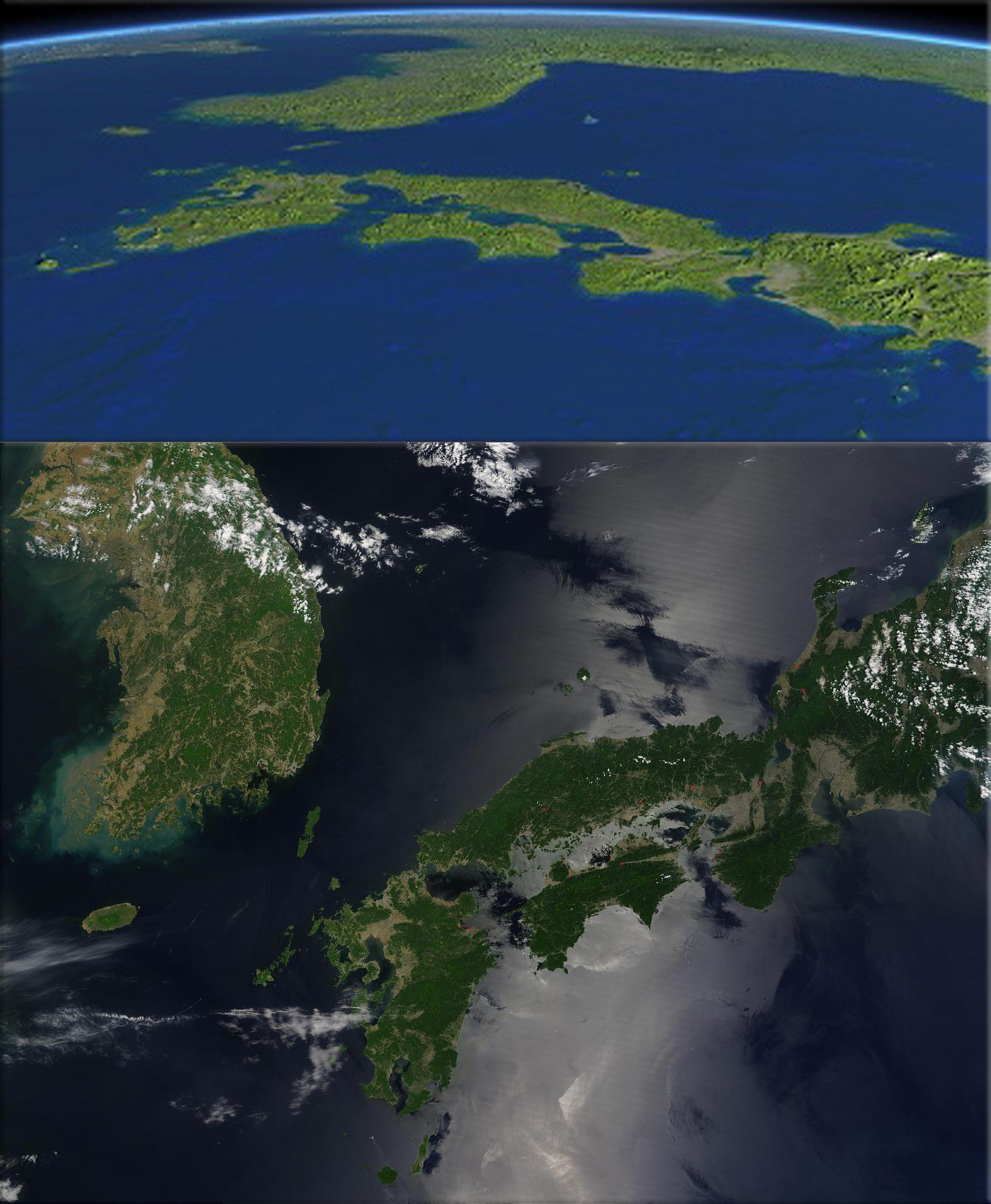
North Korea launches its controversial Kwangmyŏngsŏng-2 rocket. The satellite passed over mainland Japan, which prompted an immediate reaction from the United Nations Security Council, as well as participating states of Six-party talks.
Wikipedia Image: Japan - Korea Satellite image: shows North and South Korea (upper left) as well as the Japanese island of Shikoku, between Kyushu to the southwest and Honshu to the north. credit Earth Observatory, NASA.
April 5th, 2010
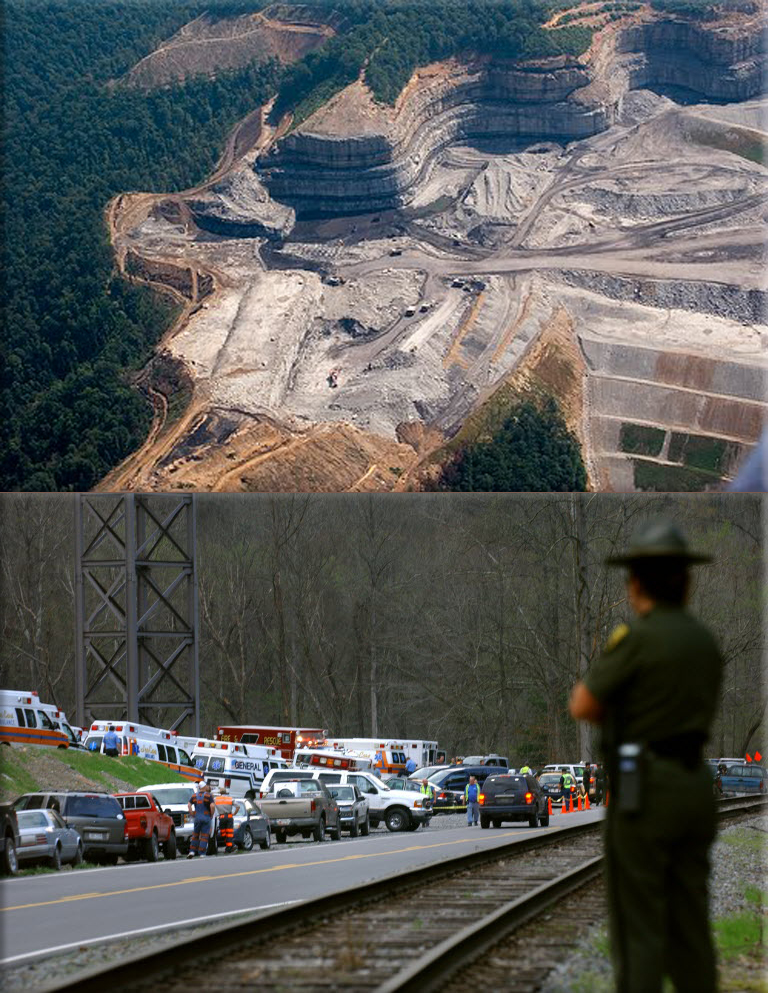
Twenty-nine coal miners are killed in an explosion at the Upper Big Branch Mine in West Virginia.
Wikipedia Photo: Upper Big Branch Mine in West Virginia 2010.
